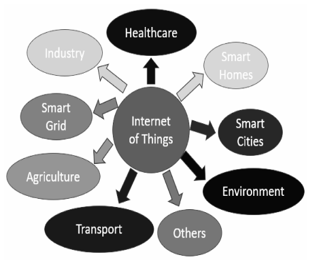Real Time Security Enhancement for IOT Enabled Intelligent Network
Keywords:
Machine Learning (ML), IoT Applications, Privacy and protection, Internet of Things (IoT) SystemAbstract
The Internet of Things (IoT) will continue to have an increasing impact on our economic, commercial, and social lives. Because they frequently have limited resources, IoT network nodes become appealing targets for hackers. In order to address the security and privacy challenges that IoT networks face, a lot of work has been put forth, primarily using conventional encryption approaches. IoT networks have a number of security issues, but current solutions are limited by the characteristics of IoT nodes. It can be difficult to have secure and private conversations due to the Internet of Things' (IoT) extensive use and implementation. Different security concerns in IoT networks and devices can be addressed using machine learning (ML) techniques. This proposal offers a comprehensive examination of the security requirements for IoT networks, potential attack vectors, and current security measures. In order to address new security issues in cyber-physical systems (CPS), a number of research directions have been investigated. One of these directions is machine learning (ML), which has been hailed as the most cutting-edge and promising strategy. It addresses the most recent developments in machine learning techniques to address IoT device security challenges, describes IoT system designs, and analyzes various IoT system assaults. The use of machine learning techniques to offer decentralized privacy and protection was recently proposed. This proposal also discusses potential research challenges brought on by IoT devices' potential use of security measures in the future.
Downloads
References
“35.100 Open systems interconnection (OSI),” ISO, 04-Apr-2020. [Online]. Available: https://www.iso.org/ics/35.100/x/. [Accessed: 11-Oct-2021].
A. Alhowaide, I. Alsmadi, and J. Tang, “Ensemble Detection Model for IoT IDS,” Internet of Things, p. 100435, 2021.
A. Alhowaide, I. Alsmadi, and J. Tang, “PCA, Random-Forest and Pearson Correlation for Dimensionality Reduction in IoT IDS,” 2020 IEEE International IOT, Electronics and Mechatronics Conference (IEMTRONICS), 2020.
A. Churcher, R. Ullah, J. Ahmad, S. ur Rehman, F. Masood, M. Gogate, F. Alqahtani, B. Nour, and W. J. Buchanan, “An Experimental Analysis of Attack Classification Using Machine Learning in IoT Networks,” Sensors, vol. 21, no. 2, p. 446, 2021.
Demirpolat, A. K. Sarica, and P. Angin, “ProtÉdge: A Few‐Shot Ensemble Learning Approach to Software‐Defined Networking‐Assisted Edge Security,” Transactions on Emerging Telecommunications Technologies, vol. 32, no. 6, 2020.
Djenna, D. E. Saidouni, and W. Abada, “A Pragmatic Cybersecurity Strategies for Combating IoT-Cyberattacks,” 2020 International Symposium on Networks, Computers and Communications (ISNCC), 2020. 97
“About the Metasploit Meterpreter,” Offensive Security. [Online]. Available: https://www.offensive-security.com/metasploit-unleashed/about-meterpreter/. [Accessed: 16-Oct-2021].
“About Wireshark,” Wireshark · Go Deep. [Online]. Available: https://www.wireshark.org/. [Accessed: 11-Oct-2021].
Ahlashkari, “CICFlowmeter,” GitHub. [Online]. Available: https://github.com/ahlashkari/CICFlowMeter. [Accessed: 03-Oct-2021].
“Argus Manual Pages.” [Online]. Available: https://openargus.org/oldsite/man/man8/argus.8.pdf. [Accessed: 05-Oct-2021].
B. Susilo and R. F. Sari, “Intrusion Detection in IoT Networks Using Deep Learning Algorithm,” Information, vol. 11, no. 5, p. 279, 2020.
“Bare Metal hypervisor,” VMware. [Online]. Available: https://www.vmware.com/topics/glossary/content/bare-metal-hypervisor. [Accessed: 16-Oct-2021].
C. Kemp, C. Calvert, and T. M. Khoshgoftaar, “Detection Methods of Slow Read DOS Using Full Packet Capture Data,” 2020 IEEE 21st International Conference on Information Reuse and Integration for Data Science (IRI), 2020.
B. B. Zarpelo, R. S. Miani, C. T. Kawakani, and S. C. de Alvarenga, “A survey of intrusion detection in internet of things,” Journal of Network and Computer Applications, vol. 84, pp. 25 – 37, 2017.
M. binti Mohamad Noor and W. H. Hassan, “Current research on internet of things (iot) security: A survey,” Computer Networks, vol. 148, pp. 283 – 294, 2019.
K. T. Nguyen, M. Laurent, and N. Oualha, “Survey on secure communication protocols for the internet of things,” Ad Hoc Networks,vol. 32, pp. 17 – 31, 2015. Internet of Things security and privacy:design methods and optimization.
K. Sha, W. Wei, T. A. Yang, Z. Wang, and W. Shi, “On security challenges and open issues in internet of things,” Future Generation Computer Systems, vol. 83, pp. 326 – 337, 2018.
M. Tao, K. Ota, M. Dong, and Z. Qian, “Accessauth: Capacity-aware security access authentication in federated-iot-enabled v2g networks,”Journal of Parallel and Distributed Computing, vol. 118, pp. 107 –117, 2018.
I. Farris, T. Taleb, Y. Khettab, and J. Song, “A survey on emerging sdn and nfv security mechanisms for iot systems,” IEEE Communications Surveys Tutorials, vol. 21, pp. 812–837, Firstquarter 2019.
M. at. el, “Machine Learning for Internet of Things Data Analysis: A Survey,” Journal of Digital Communications and Networks, Elsevier,vol. 1, pp. 1–56, Feburary 2018.
Y. Yang, L. Wu, G. Yin, L. Li, and H. Zhao, “A survey on security and privacy issues in internet-of-things,” IEEE Internet of Things Journal,vol. 4, pp. 1250–1258, Oct 2017.
A. Chowdhury and S. A. Raut, “A survey study on internet of things resource management,” Journal of Network and Computer Applications,vol. 120, pp. 42 – 60, 2018.

Downloads
Published
How to Cite
Issue
Section
License

This work is licensed under a Creative Commons Attribution-ShareAlike 4.0 International License.
All papers should be submitted electronically. All submitted manuscripts must be original work that is not under submission at another journal or under consideration for publication in another form, such as a monograph or chapter of a book. Authors of submitted papers are obligated not to submit their paper for publication elsewhere until an editorial decision is rendered on their submission. Further, authors of accepted papers are prohibited from publishing the results in other publications that appear before the paper is published in the Journal unless they receive approval for doing so from the Editor-In-Chief.
IJISAE open access articles are licensed under a Creative Commons Attribution-ShareAlike 4.0 International License. This license lets the audience to give appropriate credit, provide a link to the license, and indicate if changes were made and if they remix, transform, or build upon the material, they must distribute contributions under the same license as the original.





